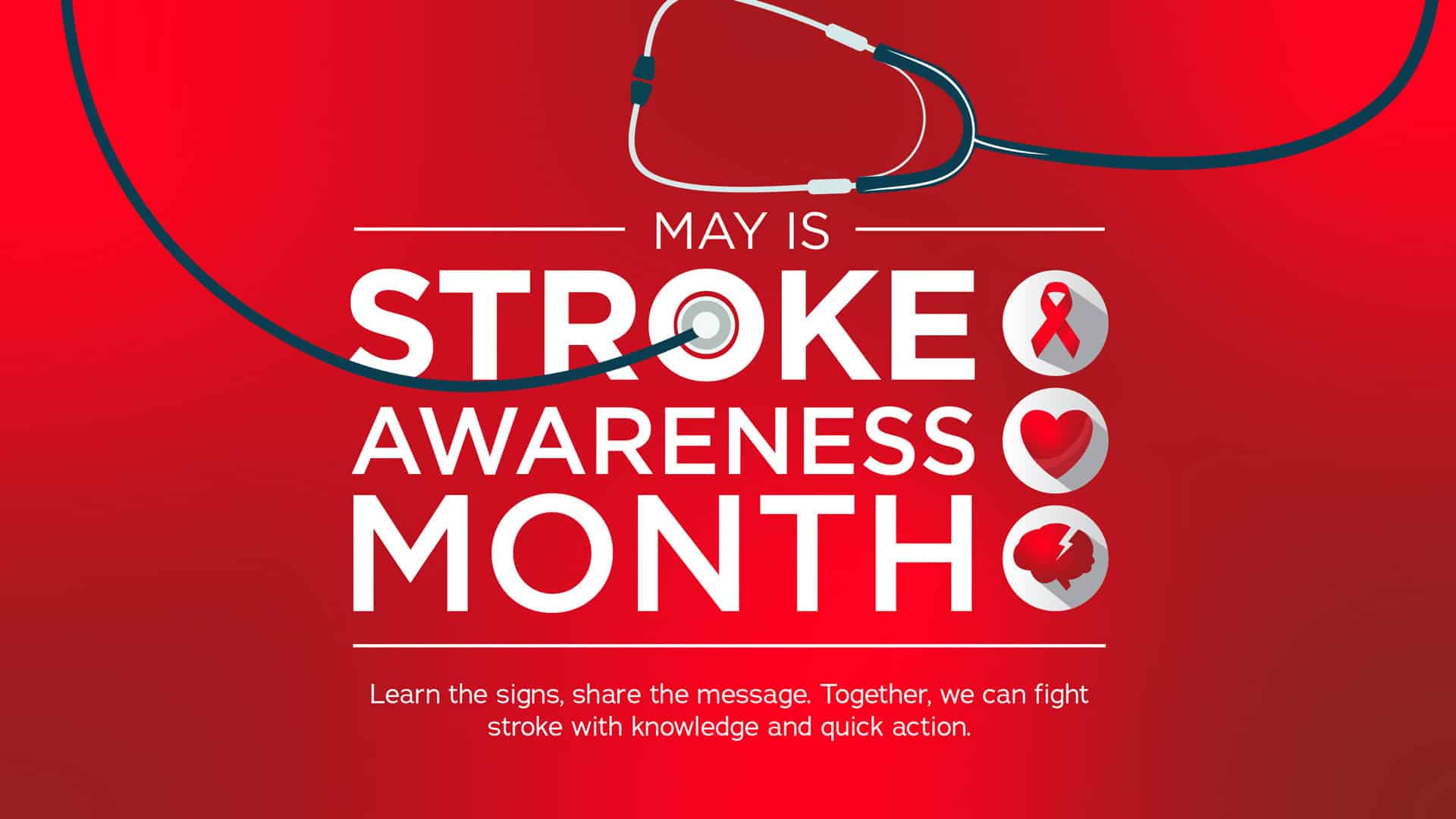
May is Stroke Awareness Month, and it’s a powerful reminder to learn how to spot the signs of a stroke and respond quickly. Every second counts when it comes to stroke, and knowing what to do can help save a life.
A stroke occurs when blood flow to the brain is suddenly blocked (ischemic stroke) or when a blood vessel ruptures (hemorrhagic stroke). Without prompt treatment, brain cells begin to die within minutes. Stroke remains one of the leading causes of death and long-term disability in the United States.
What Causes Stroke?
The most common type of stroke—ischemic stroke—makes up nearly 87% of all cases (American Stroke Association). These strokes occur when a blood clot or blockage prevents oxygen-rich blood from reaching part of the brain.
Some risk factors—such as age, race, and family history—are outside your control. However, many risks can be reduced through healthy lifestyle choices. These include:
- Managing high blood pressure
- Quitting smoking
- Controlling diabetes
- Lowering cholesterol
- Maintaining a healthy weight through diet and exercise
How to Spot a Stroke Using F.A.S.T.
The American Heart Association created the F.A.S.T. method to help people recognize stroke symptoms quickly:
- F – Face Drooping: One side of the face droops or feels numb. Ask the person to smile, does it look uneven?
- A – Arm Weakness: One arm feels weak or drifts downward when both are raised.
- S – Speech Difficulty: Speech is slurred, hard to understand, or absent.
- T – Time to Call 911: If you see any of these signs, call 911 right away.
Even if the symptoms go away, do not wait. A stroke is a medical emergency.
Watch the official F.A.S.T. video from the American Heart Association:
Additional Stroke Symptoms to Know
Beyond the F.A.S.T. signs, strokes may also cause:
- Sudden numbness or weaknesses especially on one side of the body
- Sudden trouble seeing in one or both eyes
- Difficulty walking, dizziness, or loss of balance
- A sudden, severe headache with no known cause
If you or someone else experiences any of these symptoms, call 911 immediately.
Why You Should Call 911—Not Drive
If you suspect someone is having a stroke, don’t attempt to drive them to the hospital. Call 911 so emergency responders can begin treatment during transport and ensure the patient is taken directly to a stroke-ready hospital.
Prevention Starts with Everyday Choices
While some stroke risks can’t be avoided, many can be reduced through daily habits. Focus on:
- Eating a balanced, heart-healthy diet
- Staying physically active
- Managing stress
- Quitting smoking
- Keeping blood pressure, blood sugar, and cholesterol levels in check
If you or someone close to you has had a stroke, know that recovery support and resources are available through the American Heart Association.
Elite Hospital Kingwood
High-quality emergency care. No long wait times. Open 24/7—even on weekends and holidays.
Sources
- American Stroke Association – Types of Stroke
- American Heart Association – Stroke Symptoms
- Centers for Disease Control and Prevention – Stroke Signs and Symptoms
